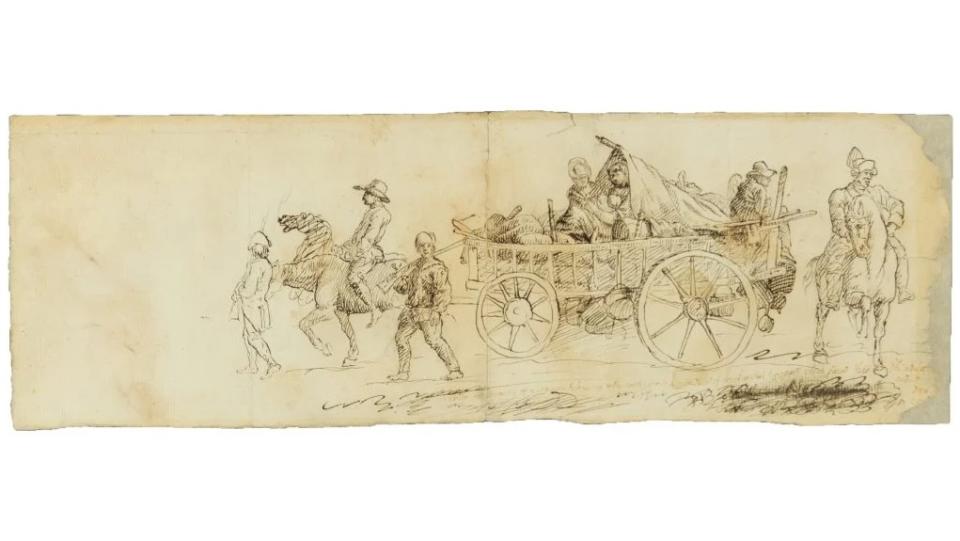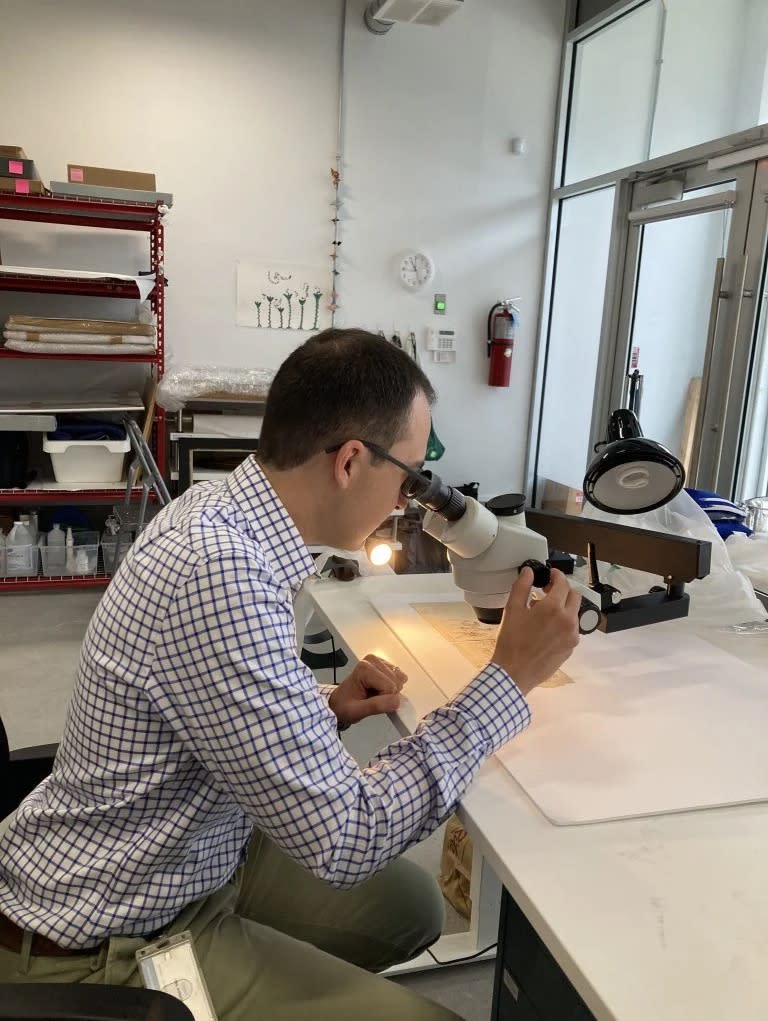Artwork uncovered in NYC apartment turns out to be rare, priceless Revolutionary War sketch

A rare drawing dating to the Revolutionary War could be the earliest known depiction of colonial women’s role in the war for independence — and it was found hanging in a Big Apple apartment.
The 1777 drawing by Pierre Eugene du Simitiere, the Swiss artist known for painting the first known portrait of George Washington, was discovered in the apartment of an amateur collector by the curator of the Museum of the American Revolution, the Washington Post reported.

“My heart was racing,” curator Matthew Skic told the outlet. “One of the soldiers was wearing a distinctive American garment called a hunting shirt. It was a typical garment of the Continental Army worn by American soldiers.”
The pen-and-ink sketch in Judith Hernstadt’s home shows soldiers walking or riding alongside a horse-drawn wagon stacked with supplies — with two women and a baby sitting inside.
It made the rare piece of art a historic gem: It was the oldest known drawing of “camp followers,” or the wives and daughters who tagged along with the troops to help with cooking and other chores.
“I could see Matthew was excited,” Hernstadt said. “I was just pleased he appreciated the artwork. It was always a favorite of mine.”
She said she picked up the 15-by-5-inch drawing 40 years ago.

After some detective work, Skic identified du Simitiere as the artist and dug through historical clips to learn that it depicted North Carolina troops marching through Philadelphia.
Excited by the discovery, Hernstadt agreed to have the drawing displayed at the Museum of the American Revolution, and will be on hand when it is unveiled later this week, the Post said.

